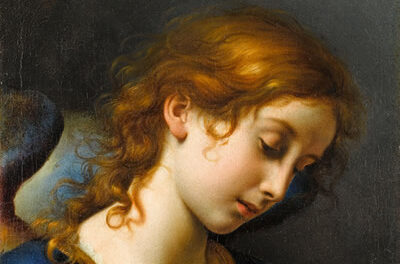Carolina Baroque: Handel & Salisbury, Trio Sonata in Bb, Op. 2 No. 3, HWV 388; Passacaille from Trio Sonata in G, Op. 5 No. 4, HWV 399; Trio Sonata in A, Op. 5, No. 1, HWV 396; Organ Concerto in F, Op. 4 No. 5, HWV 293 (Dupré); Allegro and Allegro moderato from Concerto Grosso in D minor, Op. 6 No. 10, HWV 328; Allegro and Menuet from Concerto Grosso in D, Op. 6 No. 5, HWV 323; selections from Acis and Galatea, Judas Maccabaeus, L’Allegro, il Penseroso ed il Moderato, Messiah, Solomon, Samson; and Alexander’s Feast or The Power of Musick: An Ode in Honor of St. Cecilia by John Dryden. Dale Higbee, soprano and sopranino recorders; John Pruett and Susan Perkins, baroque violins; Marian Wilson, baroque viola; Holly Maurer, bass viola da gamba; Matthew M. Brown, organ and harpsichord (single-manual Kingston); Teresa Radomski, soprano. White Sound Studio CB-133, 2011, TT: 85 minutes; 2 discs, 25 tracks, for information contact: info@carolinabaroque.org
For over 20 years Salisbury, NC has been home to Carolina Baroque, an esteemed ensemble organized and directed by recorder player and scholar Dale Higbee. Higbee has announced his retirement from performance with this, their 33rd and final CD. Connecting to the “other” Salisbury, the music-loving English cathedral city of Wiltshire where Handel’s music was frequently performed in the composer’s lifetime and where he had a friend and collaborator in James Harris who organized much of musical life in Salisbury and the annual Salisbury Festival, the two discs capture their live performance of April 15, 2011 in the Chapel of St. John’s Lutheran Church, Salisbury, NC performed at low pitch (A = 415) on reconstructed period instruments. Well-known excerpts from oratorios, odes, a masque, two complete trio sonatas, and a pair of concerti grossi (one in D, one in D minor) are enhanced with an organ concerto (arranged for solo organ by Marcel Dupré) and a trio sonata passacaille movement thrown in for good measure. Copious liner notes researched by Higbee are provided with complete texts.
The programming on this recording is a finely balanced offering of some of the master’s most beloved music and shows us why his music has endured. As a “historic sampler,” it contains instrumental music composed as early as 1700 with some of this material later worked into the trio sonatas when they were published over a twenty-year period beginning in 1718. Like the trio sonatas, Acis and Galatea dates from 1718 but had its origins ten years prior. The oratorios and odes are works of Handel’s later years, when he was relinquishing the no-longer profitable business of composing opera seria in favor of these more conservative works. The organ concerto is a welcome addition to the recording, an example of a genre performed frequently between the acts of Handel’s oratorios. This one, a reworking of the Sonata in F, Op. 1 No. 11, HWV 369 for recorder and continuo, was played between Parts I and II of the oratorio Deborah, HWV 51 which had its debut in 1733.
The music is beautifully realized in this recording. Radomski exhibits vocal clarity and a delicate agility which is beautifully suited to this music. Her embellishment style is best heard in “Let the Bright Seraphim” where she pairs with the soprano recorder substituting for the original trumpet obbligato. Higbee’s imagination as an improviser seems inexhaustible as he adds delicate filigree to most of Handel’s score. The pairing of vocalist and obbligato sopranino recorder (made by Dolmetsch) in “Hush, ye pretty warbling quire!” is artful and simply charming. The strings are pleasingly balanced throughout and play with technical sureness; their enthusiasm super-hyped in the Allegro from the Concerto Grosso in D, which contains some of the program’s most strongly etched instrumental figurations. The rhythmic sureness of the continuo players is an essential and gratifying element of the recording.
The very nature of live recordings is, of course, that they capture particular moments and freeze them in time. As archives of performances of record they are invaluable. And, they capture all too well any mishaps that occur — here a misfired bowing, there a faulty intonation, or, more seriously, even a missed entrance, as well as ambient noise (was that the faint wail of a train?). They stand as evidence that however well prepared and professional the players may be it is the slightest lapses of concentration that become set in stone. Unlike hearing the performance, these can be replayed over and over, leaving no doubt as to what it was you heard.
While this performance is by no means flawless, it represents the generally high level of its players who are intimately conversant with 18th century performance practice, a record of Carolina Baroque’s decades-long commitment to the master composers of the high Baroque era.











